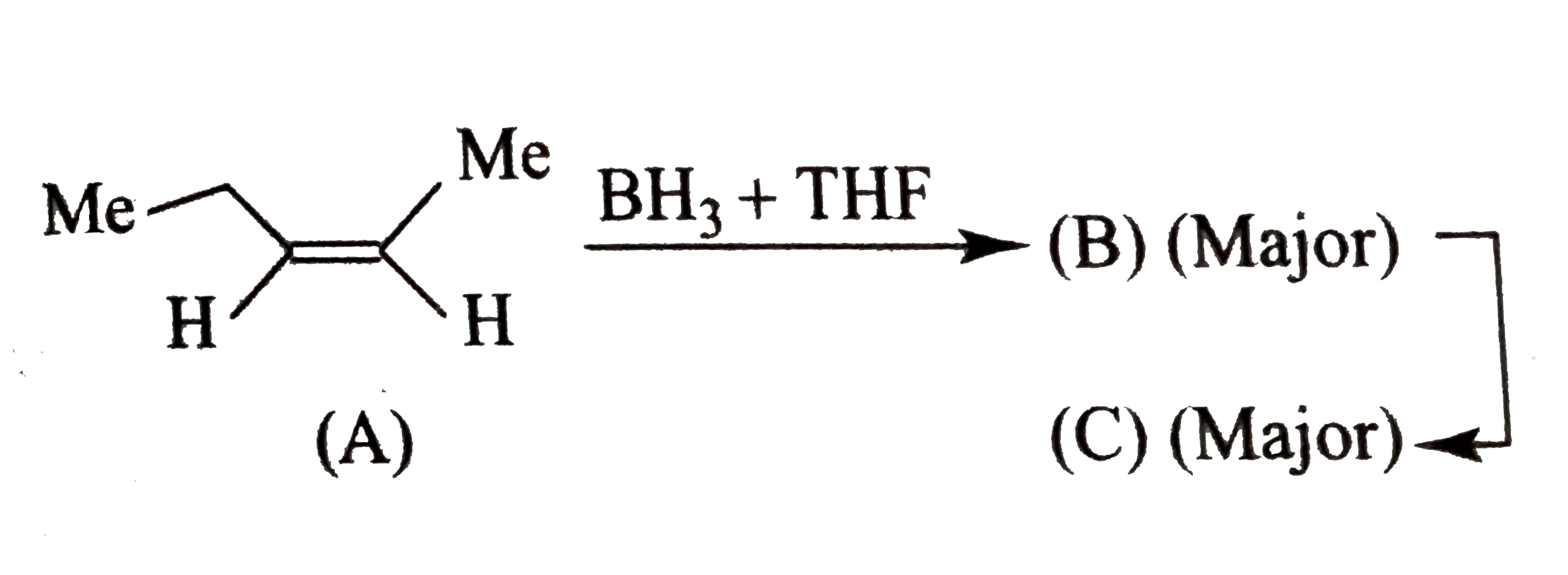Give the stability of the following resonance structures
(a) H2C=⊕N=ΘC
(b) H2⊕C−N=ΘN
(c ) H2ΘC−⊕N≡N
(d) H2ΘC−N=⊕N .
To determine the stability of the given resonance structures, we will analyze each structure based on the following criteria:
1. Presence of Charges: Structures without charges are generally more stable.
2. Electronegativity and Charge Distribution: Negative charges should be on more electronegative atoms, while positive charges should be on less electronegative atoms.
3. Octet Rule: Structures where all atoms have a complete octet are more stable than those where one or more atoms do not.
Now, let's analyze each structure step by step:
(a) H₂C=⊕N=ΘC
1. Charge Distribution: The positive charge is on carbon (less electronegative) and the negative charge is on nitrogen (more electronegative).
2. Octet Check: All atoms have a complete octet.
3. Stability: This structure is stable due to proper charge distribution and complete octets.
(b) H₂⊕C−N=ΘN
1. Charge Distribution: The positive charge is on carbon (less electronegative) and nitrogen has a negative charge.
2. Octet Check: The carbon has only 6 electrons (octet incomplete).
3. Stability: This structure is less stable due to the incomplete octet on carbon.
(c) H₂ΘC−⊕N≡N
1. Charge Distribution: The negative charge is on carbon (less electronegative) and the positive charge is on nitrogen (more electronegative).
2. Octet Check: All atoms have complete octets.
3. Stability: This structure is stable, but the negative charge on carbon makes it less favorable compared to structure (a).
(d) H₂ΘC−N=⊕N
1. Charge Distribution: The negative charge is on carbon (less electronegative) and the positive charge is on nitrogen (more electronegative).
2. Octet Check: The nitrogen has only 6 electrons (octet incomplete).
3. Stability: This structure is less stable due to the incomplete octet on nitrogen and the unfavorable charge distribution.
Summary of Stability Order
Based on the analysis, we can summarize the stability order of the resonance structures as follows:
1. Most Stable: (a) H₂C=⊕N=ΘC
2. Moderately Stable: (c) H₂ΘC−⊕N≡N
3. Less Stable: (b) H₂⊕C−N=ΘN
4. Least Stable: (d) H₂ΘC−N=⊕N
Final Stability Order
Stability Order: (a) > (c) > (b) > (d)
2. Electronegativity and Charge Distribution: Negative charges should be on more electronegative atoms, while positive charges should be on less electronegative atoms.
3. Octet Rule: Structures where all atoms have a complete octet are more stable than those where one or more atoms do not.
2. Octet Check: All atoms have a complete octet.
3. Stability: This structure is stable due to proper charge distribution and complete octets.
2. Octet Check: The carbon has only 6 electrons (octet incomplete).
3. Stability: This structure is less stable due to the incomplete octet on carbon.
2. Octet Check: All atoms have complete octets.
3. Stability: This structure is stable, but the negative charge on carbon makes it less favorable compared to structure (a).
2. Octet Check: The nitrogen has only 6 electrons (octet incomplete).
3. Stability: This structure is less stable due to the incomplete octet on nitrogen and the unfavorable charge distribution.
2. Moderately Stable: (c) H₂ΘC−⊕N≡N
3. Less Stable: (b) H₂⊕C−N=ΘN
4. Least Stable: (d) H₂ΘC−N=⊕N
Stability Order: (a) > (c) > (b) > (d)
Topper's Solved these Questions
- BOOK - CENGAGE CHEMISTRY ENGLISHCHAPTER - CHEMICAL BONDING AND MOLECULAR STRUCTUREEXERCISE - Solved Examples36videos
CHEMICAL BONDING AND MOLECULAR STRUCTURE
- BOOK - CENGAGE CHEMISTRY ENGLISHCHAPTER - CHEMICAL BONDING AND MOLECULAR STRUCTUREEXERCISE - Ex 2 .2 Subjective (Intermolecular Forces And H-Bonding)7videos
CHEMICAL BONDING AND MOLECULAR STRUCTURE
- BOOK - CENGAGE CHEMISTRY ENGLISHCHAPTER - ATOMIC STRUCTUREEXERCISE - Concept Applicationexercise(4.3)19videos
ATOMIC STRUCTURE
- BOOK - CENGAGE CHEMISTRY ENGLISHCHAPTER - CHEMICAL EQUILIBRIUMEXERCISE - Subjective type1videos
CHEMICAL EQUILIBRIUM
Similar Questions
Knowledge Check
- Question 1 - Select One
The correct stability order of the following resonance structures is :
H2C=⊕N=өN(I) H2⊕C−N≡өN(II) H2өC−⊕N≡N(III) H2өC−N=⊕N(IV)AI>II>IV>IIIBI>III>II>IVCII>I>III>IVDIII>I>IV>II - Question 2 - Select One
An unknown alkene (A) reacts with 3 mole of H2 gas in presence of platinum catalyst to form 1-isopropyl-4-methyl cyclohexane. When unknown alkene (A) is ozonized and reduced, following product are obtained
H−O∣∣C−H H−O∣∣C−CH2−O∣∣−O∣∣C−CH3, CH3−O∣∣C−CH2−O∣∣C−H
The alkene (A) is :A B
B C
C D
D
Arrange the following resonating structures in order of increasing stability
CH2=+N=−N(I) H2+C=N=−N(II) H2−C−+N≡N(III) H2−C−N=+N(IV)View SolutionCorrect order of stability of the following resonating structure is
CH2=CH(a)−O∣∣C−H↔ΘCH2−CH(b)=ΘO∣C−H↔Θ⋅⋅CH2−CH(c)=⊕O∣C−HView SolutionIdentify the most stable species in the following set of ions giving reasons
(a) +CH3,+CH2Br,+CHBr2,+CBr3 (b) ΘCH3,ΘCH2Cl,ΘCHCl2,ΘCCl3View SolutionGive the IUPAC name of the following organic compounds:
H−H∣C∣H−O∣∣C−HView Solution H2O2+ΘOH
H2O2+ΘOH
B and C are:View SolutionWrite the names of the monomers of the following polymers:
⎡⎢ ⎢⎣−−NH∣N−(CH2)6−H∣N−O∣∣C−(CH2)4−O∣∣C−−⎤⎥ ⎥⎦nView Solution

